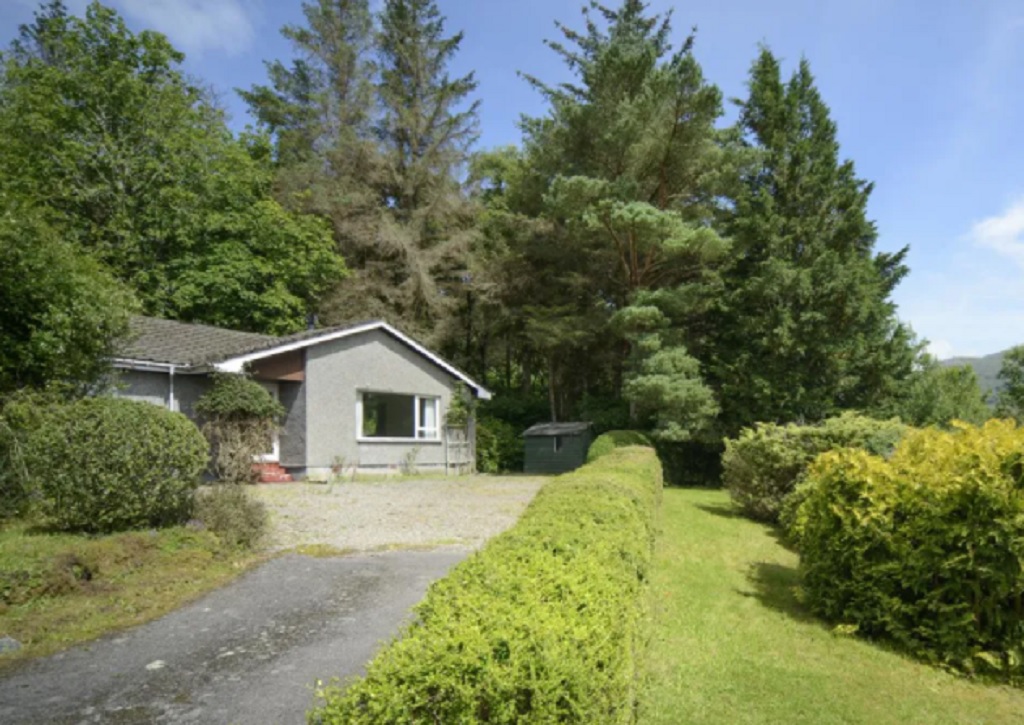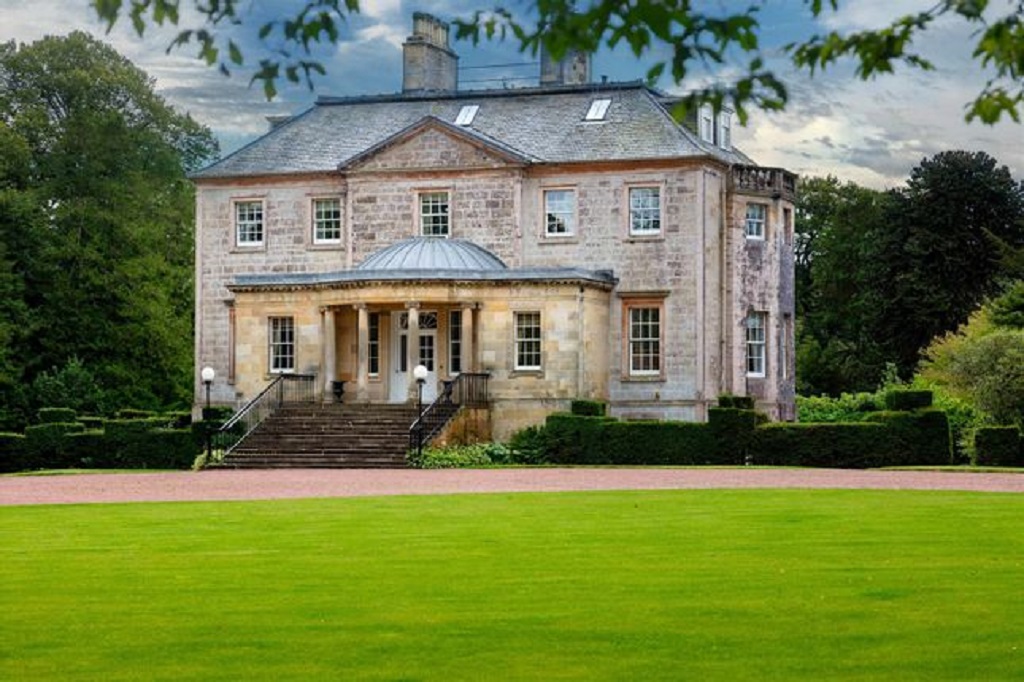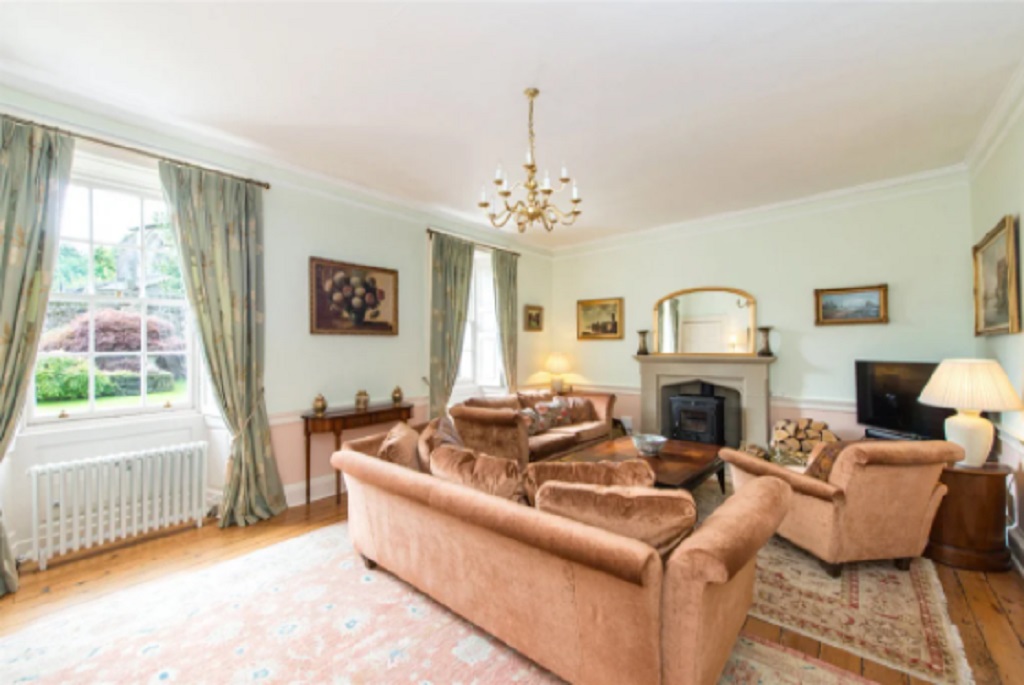A ruined castle, mansion and surrounding estate with a significant heritage and offering huge potential is now for sale.
Presented by Rettie & Co, this sale comprises the medieval ruins of Dalquharran Old Castle and the Robert Adam Dalquharran Castle, productive farmland, mature woodland, fishing on the Water of Girvan and several residential development opportunities
Dalquharran Estate is situated in the valley of the Water of Girvan, north of the village of Dailly and about five miles inland from the coastal town of Girvan.
Dalquharran Old Castle stands on the north bank of the Water of Girvan, about 300m south east of the later 18th century Castellated Mansion, also called Dalquharran Castle, designed by Robert Adam.
The first recorded Laird was Gilbert Kennedy, as recorded in 1474 in a Charter of Crossraguel Abbey, following which the property was acquired by the Kennedys of Girvan Mains. Towards the end of the 17th Century, Sir Thomas Kennedy of Kirkhill, Lord Provost of Edinburgh, purchased the Estate.
Dalquharran Castle is a Mansion House originally built by Robert Adam of Culzean Castle fame. Originally built for Thomas Kennedy of Dunure, who had married Robert Adam’s sister, Jean. There is a round tower and central stair reminiscent of those at Culzean. Wings were subsequently added in 1881 by Walker & Son of Belgravia.
The ‘new’ castle is arranged symmetrically around a central entrance hall, with top-lit central spiral staircase similar to Culzean Castle, which Adam designed for David Kennedy from around 1776. The house has four floors, with bedchambers in the two floors. The interior was decorated in a classical style. Services were located in the basement.

A round bastion turret in the south front contained a drawing room on the ground floor, with library above, with views over Girvan Water. A large oval dining room occupies the east wing on the ground floor.
To the north, Adam designed a long low stable range connected at either end to the main building by screen walls with gateways, creating a forecourt. The outbuildings were constructed in a simpler style intended by Adam, possibly after his death in 1792, with several small lodges arranged symmetrically around the court.
The castle is category A listed. The stonework largely appears in good condition; otherwise the castle and stable block are derelict.
Historic Environment Scotland describe Dalquharran Old Castle as follows: The Old Castle occupied a strong position, guarded by the Water of Girvan, marshlands and a former moat. Originally a rectangular Keep, the Old Castle was greatly enlarged and converted into a ‘Stately Castle’ in about 1679.
The 15th Century Keep, from its plan and careful detailing, is an exceptional example of a Castellated House. It was laid out on a rectangular plan comprising three storeys and an attic, probably with an external stair giving entrance to the Great Hall at first floor level. This floor was probably divided in two with a private chamber at the east end giving access to the southeast corner tower. This chamber contains an ornate aumbry, decorated with the Arms of the Kennedys.
A heavy buttress at the southwest corner and a rectangular stair tower at the northwest appear to have been secondary additions. The original castle measures 18m x 8m with walls almost 2m thick.
The Garret storey within the parapet walk is now lost. The ground floor is vaulted. The large extension which transformed the north part has a pediment dated 1679, while a window lintel is dated 1677. This wing measures about 16.6m in length by 7m in width with a projecting round tower at the northeast angle, and a square tower in the rear-entrant angle are articulated with both the Old Keep and with the new work. This new wing contained a kitchen and storage in the basement, with a large drawing room on the first floor with bedrooms above.
The north and west was enclosed by a barmkin wall, the central and north part of which features the remarkable remains of an ornate 17th century gateway, linked to the 18th century mansion by a tree lined avenue.

There are indications that the grounds were laid out with gardens, bowling greens and other ornamental devices of the period. A scarp to the west of the main tower may represent the line of the enclosing moat, mentioned by MacGibbon and Ross.
Dalquharran Old Castle is a Scheduled Monument and comprises the remains described and the area around them in which related material may be expected to survive. The area is irregular in plan with maximum dimensions of 129m north to south by 126m east to west.
Historic Environment Scotland also state the following: The Monument is of national importance as the well-preserved remains of a Castellated Residence, which has the potential to enhance our understanding of the development of the Lordly House, from Medieval Castle to Renaissance Mansion, evinced by the triumph of comfort and display of a defence. The immediate surrounding areas have potential to provide important archaeological information regarding the infrastructure of such residences, common notably the remains of formal gardens.
In addition to the castle, stable block and Old Castle there are interspersed across the Estate, a number of derelict and semi-derelict buildings that are no longer in use but with some maintenance could provide a functional purpose going forward or represent a number of small development opportunities subject to gaining the appropriate permissions.
These include: Cottage and former Byre – a derelict stone cottage with dilapidated slate roof. Situated by main entrance drive; Stable – a south-facing stone and brick-built former stable with slate roof on the edge of Castle Wood; Farmhouse and Traditional Buildings – a derelict stone farmhouse neighboured by a number of
former stone outbuildings to the north east of the castle; Former Walled Garden – situated to west of castle; Atcost Shed – open sided agricultural storage building.
The land at Dalquharran extends to about 261 acres (105 ha) in total and is comprised of 160.12 acres of permanent and ploughable pasture, 72.35 acres of amenity, mostly broadleaf, woodland and about 29.28 acres of miscellaneous land uses which in turn is made up of buildings, tracks, river bank and the Water of Girvan.
The majority of the farmland is improved grassland and classified as Grade 3(2) by the James Hutton Institute with deep soil depths made up of riverine clay, sands and gravels. The grassland has yielded good crops of silage and forms a parkland setting that would require an ongoing fencing programme before an incoming purchaser could independently stock all the field enclosures.
The internationally renowned golf and leisure resort at Turnberry is about five miles to the north-west. Its Ailsa Course regularly hosts the OpenChampionship. Culzean Castle and Country Park is a short distance to the north and is a notable surviving example of Robert Adam’s work.

The local village of Dailly has a leisure centre, village shop, primary school, doctor’s surgery, community centre and hotel. Immediately to the west of Dalquharran lies Brunston Castle Resort Holiday Park. This includes a number of holiday lodges, 18-hole golf course, clubhouse, driving range, children’s play area, gymnasium and indoor pool.
The nearby town of Girvan was originally a fishing port which developed into a seaside resort following the arrival of the railway. Rail services still run from Girvan. Girvan has a population of circa 6,700 and recently a new district hospital has been developed along with a new leisure centre.
Girvan also has a golf course and the principal local employers are the William Grant and Sons Distillery and Nestlé. The county town of Ayr is about 21 miles north of Girvan and Stranraer is about 29 miles to the south.
Cairnryan, the ferry port for Northern Island is about 25 miles to the south. Prestwick Airport is just to the north of Ayr and has services to London Stansted and many European destinations whilst Glasgow and Edinburgh Airports provide a wider range of domestic, European and international flights.
In addition to the Championship Courses at Turnberry, there are further links golf courses at Royal Troon (also on the Open Championship rota) and Prestwick (the original home of the British Open). There is an abundance of further links courses up and down the Ayrshire coast as well as yachting marinas at Troon, Largs and Inverkip.
The neighbouring countryside is home to a number of substantial landed estates which offer a range of shooting opportunities. The Ayrshire Rivers Trust website notes that ‘The River Girvan has an excellent salmon and trout fishery with improving returns’ .
This property has a guide price of £800,000.
Click HERE to read more.
TAGS

